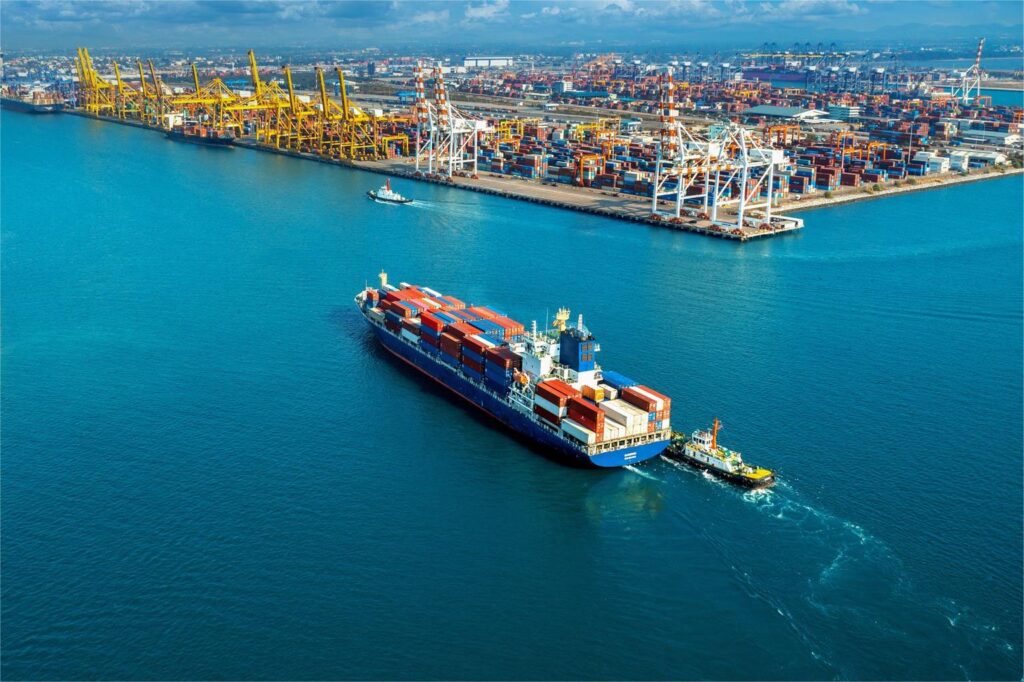- By TOP CHINA FREIGHT
- August 21, 2025
- Shipping
Table of Contents
If you’re wondering how to import goods from China to Zimbabwe, imagine your supplier in Shenzhen sends the “ready to ship” notification, but you’re unsure how to move your goods safely to Harare. Shipping delays, customs confusion, and high costs can quickly eat into your profits. Many importers struggle because they don’t fully understand the logistics. This guide provides actionable solutions, step-by-step instructions, and insights into shipping methods, costs, and inland transportation so your cargo arrives safely and on time.

Why Zimbabwean Businesses Import from China
China is a manufacturing hub offering competitive prices and a wide variety of products. Importing from China can help Zimbabwean businesses:
- Reduce product costs and increase profit margins
- Access a broader product range
- Maintain competitive advantage in local markets
- Restock quickly with reliable suppliers
However, mistakes in shipping, documentation, and customs can result in delays and extra costs. Understanding how to import goods from China to Zimbabwe is essential to avoid these common pitfalls.
Step-by-Step Import Process
1.Verify Your Supplier
- Check business licenses, certifications, and export history.
- Request samples to confirm quality.
- Ensure clear communication regarding product specifications, packaging, and delivery timelines.
Proper verification reduces the risk of defective products and shipping issues, a crucial part of how to import goods from China to Zimbabwe.
2. Choose the Right Incoterms
Common terms for Zimbabwe imports:
- FOB (Free on Board): Supplier delivers goods to the port; you handle shipping.
- CIF (Cost, Insurance, Freight): Supplier covers shipping and insurance to Zimbabwe’s port.
- EXW (Ex Works): You take responsibility from the supplier’s factory.
Your choice affects transportation responsibility, cost, and risk.
3.Prepare Documentation
Essential documents include:
- Commercial Invoice
- Packing List
- Bill of Lading (sea) or Airway Bill (air)
- Certificate of Origin
- Import License for restricted items
- Insurance Certificate
Accurate documentation is key to avoid customs delays and fines in Zimbabwe.
Choosing the Best Shipping Method

Most popular for bulk shipments:
Transit:
30–45 days from Chinese ports to Beira, Durban, or Dar es Salaam, then inland transport to Harare.
Pros:
Cost-effective for large shipments, can carry oversized cargo.
Cons:
Slower than air freight, port congestion possible.
| Container Type | Volume (cbm) | Transit Time | Approx. Cost (USD) |
|---|---|---|---|
| 20ft | 28–30 | 35–40 days | $3,200–$3,500 |
| 40ft | 56–60 | 40–45 days | $5,500–$6,000 |
Tips: Consolidate shipments, track containers, and avoid peak shipping seasons to reduce delays.

Ideal for urgent or high-value goods:
Transit:
5–7 days from major Chinese airports.
Cost:
$7–$12/kg depending on cargo type.
| Cargo Type | Transit Time | Cost (USD/kg) |
|---|---|---|
| Electronics | 5–7 days | $7–$12 |
| Perishable goods | 3–5 days | $10–$15 |

For small parcels or urgent samples:
- Companies: DHL, FedEx, UPS
- Delivery: 3–7 days door-to-door
- Cons: Expensive for large shipments
Choosing the right shipping method is a key step in how to import goods from China to Zimbabwe effectively.
Calculating Shipping Costs
Understanding costs upfront prevents surprises:
Cost Components:
- Product price
- Freight cost (air or sea)
- Insurance
- Customs duties and VAT
- Inland transportation
- Port handling fees
Example:
Landed Cost for a 20ft Container
| Item | Cost (USD) |
|---|---|
| Product cost | $10,000 |
| Sea freight | $3,200 |
| Port fees | $250 |
| Inland transport to Harare | $450 |
| Duties & VAT | $900 |
| Insurance | $100 |
| Total | $14,900 |
Use a freight forwarder to avoid hidden costs and simplify calculations.
Customs Clearance in Zimbabwe
Smooth customs clearance is critical. Steps include:
1.Submit all required documentation to ZIMRA
2.Pay applicable duties and VAT based on HS codes
3.Cargo inspection (if required)
4。Release of goods for delivery
Prohibited/Restricted Items:
Some pharmaceuticals, chemicals, firearms, and wildlife products require special permits.
Hiring a customs broker ensures compliance and faster clearance, an essential consideration for anyone learning how to import goods from China to Zimbabwe.
Freight Forwarders: Simplifying Logistics

A freight forwarder handles the complex process of transportation and customs:
Benefits:
- Consolidates shipments to save costs
- Provides real-time tracking
- Handles customs documentation
- Manages inland transport
Checklist for Choosing a Forwarder:
- Experience with Zimbabwe imports
- Transparent pricing
- Full-service (air, sea, inland)
- Strong carrier and customs network
Inland Transportation from Port to Destination
Flexible, most common for containers
Efficient for bulk goods, slower than road
Available via freight forwarders
Cost Estimates:
| Route | Mode | Distance | Cost (USD) |
|---|---|---|---|
| Beira → Harare | Road | 700 km | $450 |
| Durban → Harare | Road | 1,600 km | $900 |
| Dar es Salaam → Harare | Road | 1,300 km | $700 |
Common Challenges and Solutions
| Challenge | Solution |
|---|---|
| Shipping delays | Track shipments, buffer time |
| Customs clearance issues | Use customs broker |
| High shipping costs | Consolidate shipments, choose sea freight |
| Damaged goods | Purchase insurance, choose reliable carriers |
| Communication barriers | Work with experienced freight forwarder |
Tips for Successful Importing
1.Verify supplier and product quality
2.Negotiate clear Incoterms
3.Calculate landed cost in advance
4.Choose the best shipping method for urgency and budget
5.Prepare accurate documentation
6.Use a reliable freight forwarder
7.Plan inland transportation ahead
8.Stay updated on Zimbabwean import regulations
Real-World Example
Scenario:
A Zimbabwean business imports 1,000 electronic units from Shenzhen.
- Shipping method: Sea freight, 40ft container
- Supplier: Verified with Alibaba certifications
- Documentation: Invoice, packing list, Bill of Lading, import license
- Costs: $5,500 shipping + $10,000 product cost + $900 duties & VAT + $450 inland delivery
Outcome:
Cargo arrives in 42 days, no customs issues, landed cost is predictable, demonstrating effective importing from China to Zimbabwe.
Conclusion
Importing from China to Zimbabwe is complex but manageable with planning. By understanding shipping methods, calculating costs, preparing documents, and arranging inland transportation, businesses can ensure timely, cost-effective deliveries.
Need a Shipping Quote?
If you want expert guidance and peace of mind, our team is ready to assist.
TJ China Freight offers tailored solutions to help businesses of all sizes ship more reliably from China.
FAQs
Q1:What is the fastest way to import goods from China to Zimbabwe?
Air freight is the fastest method, taking 5–7 days from major Chinese airports to Zimbabwe. However, it is more expensive than sea freight. For bulk shipments, sea freight is more cost-effective, though transit takes 30–45 days.
Q2:How much does it cost to import a container from China to Zimbabwe?
Shipping a 20ft container by sea typically costs between $3,200–$3,500, while a 40ft container costs $5,500–$6,000. Total landed costs include customs duties, inland transport, and insurance.
Q3:Do I need an import license to bring goods from China to Zimbabwe?
Yes, certain goods such as pharmaceuticals, chemicals, and restricted items require an import license from Zimbabwe Revenue Authority (ZIMRA). Always check local regulations before shipping.
Q4:Can I ship small parcels from China to Zimbabwe?
Yes, for small shipments, express couriers like DHL, FedEx, and UPS are suitable. They offer door-to-door delivery, usually within 3–7 days.
Q5:How long does it take to clear customs in Zimbabwe?
Customs clearance can take 2–7 days depending on documentation accuracy, type of goods, and whether an inspection is required. Using a customs broker can speed up the process.
